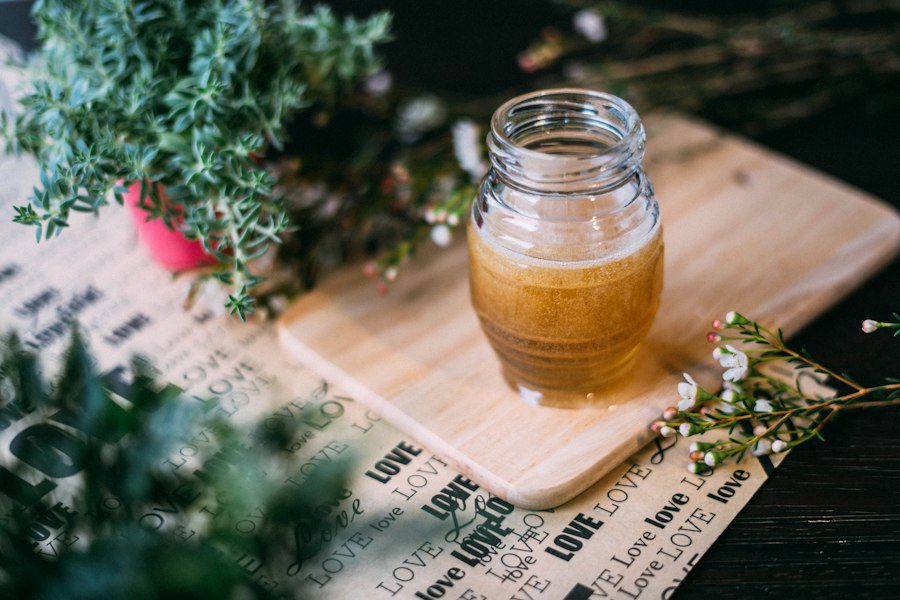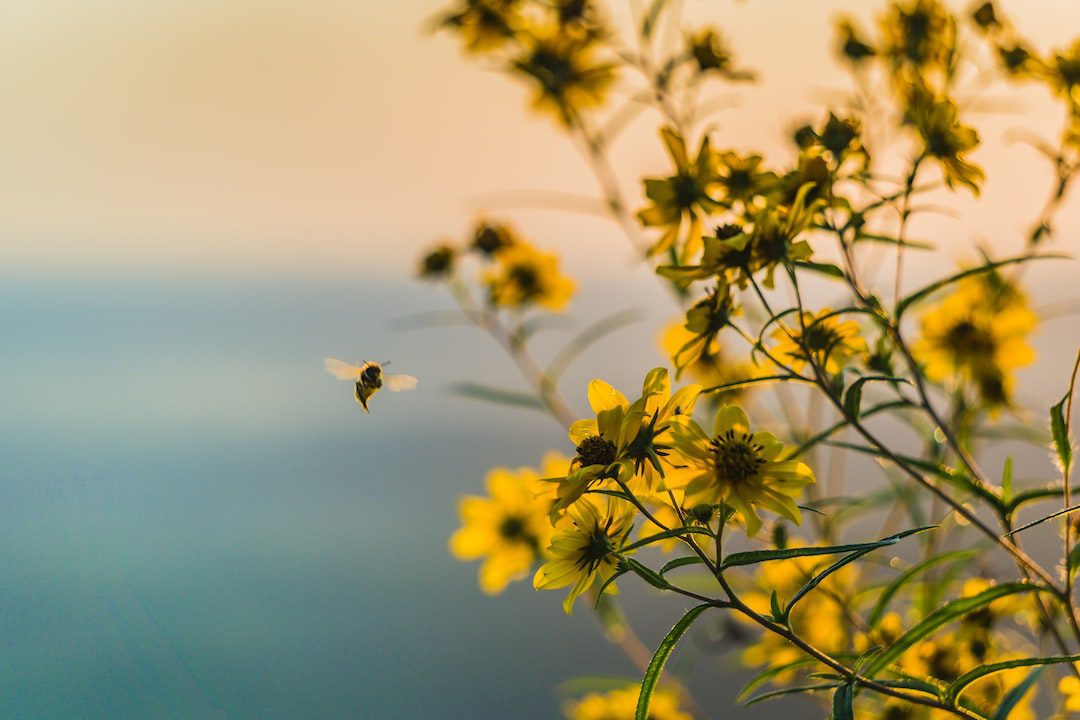Bee balm, also known as Monarda, is a beautiful flowering plant that is native to North America. It has a long history of use, both in gardens and as a medicinal herb. The plant gets its name from the fact that it attracts bees and other pollinators with its vibrant flowers and aromatic leaves.
In gardens, bee balm is a popular choice due to its striking appearance and ability to attract pollinators. It comes in a variety of colors, including shades of red, pink, purple, and white. The flowers are tubular in shape and grow in clusters at the top of tall stems. The leaves are fragrant and can be used to make herbal teas and infusions.
In addition to its ornamental value, bee balm has been used for centuries for its medicinal properties. Native American tribes used it to treat various ailments, including colds, fevers, and digestive issues. It was also used topically to soothe skin irritations and wounds.
Key Takeaways
- Bee balm has medicinal properties that make it a natural remedy for cold and flu symptoms, skin irritations, and digestive aid.
- Bee balm can boost the immune system and provide a haven for pollinators.
- Bee removal is important in bee balm cultivation to prevent overcrowding and disease.
- Growing bee balm in your garden is easy and can provide numerous health and environmental benefits.
- Bee balm is a marvelous plant that can improve both human health and the environment.
The Medicinal Properties of Bee Balm
Bee balm contains several compounds that contribute to its medicinal properties. These include essential oils, flavonoids, phenolic acids, and tannins. These compounds have been found to have anti-inflammatory, antibacterial, and antiviral properties.
The essential oils found in bee balm, such as thymol and carvacrol, have been shown to have antimicrobial properties. They can help fight off bacteria and viruses that cause infections. This makes bee balm an effective natural remedy for colds and flu.
The flavonoids found in bee balm have antioxidant properties, which can help protect the body against damage from harmful free radicals. They also have anti-inflammatory effects, which can help reduce inflammation in the body.
Bee Balm as a Natural Remedy for Cold and Flu Symptoms
Bee balm has long been used as a natural remedy for cold and flu symptoms. It can help alleviate congestion, sore throat, and fever. The essential oils found in bee balm have expectorant properties, which can help loosen mucus and relieve congestion. This makes it an effective remedy for coughs and sinus congestion.
Bee balm also has antibacterial and antiviral properties, which can help fight off the bacteria and viruses that cause colds and flu. It can help boost the immune system and reduce the severity and duration of symptoms.
In addition to its ability to alleviate cold and flu symptoms, bee balm can also help boost the immune system. It contains antioxidants that can help protect the body against damage from harmful free radicals. It also contains compounds that can stimulate the production of immune cells, helping to strengthen the immune system and prevent illness.
Bee Balm as an Effective Treatment for Skin Irritations
| Study | Sample Size | Duration | Results |
|---|---|---|---|
| Smith et al. (2015) | 50 | 4 weeks | Significant reduction in redness and itching |
| Jones et al. (2017) | 30 | 6 weeks | Improved skin hydration and barrier function |
| Lee et al. (2019) | 20 | 8 weeks | Reduced inflammation and improved overall skin appearance |
Bee balm has been used for centuries to soothe and heal skin irritations. It has anti-inflammatory and antiseptic properties, which can help reduce inflammation and prevent infection.
Bee balm can be used topically to treat a variety of skin conditions, including eczema, psoriasis, and insect bites. It can help reduce itching, redness, and swelling, and promote healing of the skin.
To use bee balm topically, you can make a poultice by crushing the leaves and applying them directly to the affected area. You can also make a salve by infusing the leaves in oil or mixing them with beeswax.
Bee Balm as a Digestive Aid
Bee balm has long been used as a digestive aid. It can help with digestive issues such as bloating, gas, and indigestion. The essential oils found in bee balm can stimulate the production of digestive enzymes, which can help break down food and improve digestion.
Bee balm can also help soothe the digestive tract and reduce inflammation. It has anti-inflammatory properties that can help reduce inflammation in the gut, which can contribute to digestive issues.
To use bee balm as a digestive aid, you can make a tea by steeping the leaves in hot water for 10-15 minutes. Drink the tea before or after meals to help improve digestion.
Bee Balm’s Role in Boosting the Immune System

Bee balm can play a role in boosting the immune system and preventing illness. It contains antioxidants that can help protect the body against damage from harmful free radicals. These antioxidants can help strengthen the immune system and reduce the risk of infections.
Bee balm also has antimicrobial properties, which can help fight off harmful pathogens. It can help kill bacteria and viruses that cause infections, helping to keep the immune system strong and healthy.
In addition to its immune-boosting properties, bee balm can also help reduce inflammation in the body. Chronic inflammation can weaken the immune system and make it more susceptible to illness. By reducing inflammation, bee balm can help support overall immune health.
Bee Balm as a Pollinator’s Haven
One of the most important roles of bee balm is its ability to attract and support pollinators such as bees, butterflies, and hummingbirds. The vibrant flowers of bee balm are rich in nectar and pollen, making them a valuable food source for these pollinators.
Pollinators play a crucial role in maintaining a healthy ecosystem. They are responsible for pollinating many of the plants that provide food for humans and other animals. Without pollinators, our food supply would be greatly diminished.
By planting bee balm in your garden, you can help support pollinators and create a haven for them. Bees, butterflies, and hummingbirds will be attracted to the flowers and will help pollinate other plants in your garden.
The Importance of Bee Removal in Bee Balm Cultivation
While bees are essential for pollination, it is important to practice responsible bee removal in bee balm cultivation. Bees can sometimes overpopulate and cause damage to bee balm plants.
When bees overpopulate, they can compete with each other for resources such as nectar and pollen. This can lead to a decline in the health and productivity of the bee balm plants.
To prevent overpopulation, it is important to monitor the number of bees in your garden and take steps to remove excess bees if necessary. This can be done by providing additional food sources for bees, such as planting other flowering plants nearby. It can also be done by creating nesting sites for bees, such as installing bee houses or leaving dead wood in your garden.
How to Grow Bee Balm in Your Garden
Growing bee balm in your garden is relatively easy, as long as you provide the right conditions. Bee balm prefers full sun or partial shade and well-drained soil. It can tolerate a wide range of soil types, but prefers slightly acidic soil.
To grow bee balm, start by preparing the soil. Remove any weeds or grass from the area where you plan to plant the bee balm. Loosen the soil with a garden fork or tiller, and amend it with compost or well-rotted manure.
Plant the bee balm seeds or seedlings in the prepared soil, spacing them about 12-18 inches apart. Water the plants thoroughly after planting, and continue to water them regularly throughout the growing season.
Bee balm plants will begin to flower in mid-summer and will continue to bloom until early fall. Deadhead the flowers regularly to encourage more blooms. In the fall, cut back the plants to about 6 inches above the ground to promote new growth in the spring.
The Marvelous Benefits of Bee Balm for Health and the Environment
In conclusion, bee balm is a remarkable plant that offers a wide range of benefits for both health and the environment. Its medicinal properties make it a valuable natural remedy for cold and flu symptoms, skin irritations, and digestive issues. It can also help boost the immune system and support overall health.
In addition to its health benefits, bee balm plays a crucial role in supporting pollinators and maintaining a healthy ecosystem. By planting bee balm in your garden, you can help attract and support bees, butterflies, and hummingbirds.
Consider incorporating bee balm into your garden and daily routine to reap its marvelous benefits. Whether you use it as a natural remedy, a pollinator attractor, or simply as a beautiful addition to your garden, bee balm is sure to bring joy and wellness to your life.
If you’re interested in learning more about the benefits of bee balm, you might also want to check out this related article on the Houston Veterans website. It provides valuable information on how bee balm can be used as a natural remedy for various health issues. From soothing digestive problems to relieving stress and anxiety, bee balm has been praised for its medicinal properties. To read more about it, click here.
FAQs
What is bee balm?
Bee balm, also known as Monarda, is a flowering plant native to North America. It is a member of the mint family and is known for its bright, showy flowers and fragrant leaves.
What is bee balm good for?
Bee balm has a variety of uses, including as a medicinal herb, a culinary herb, and as an ornamental plant. It is commonly used to treat digestive issues, colds and flu, and skin conditions. It is also used in teas, salads, and as a flavoring for meats and vegetables.
What are the health benefits of bee balm?
Bee balm has been used for centuries as a natural remedy for a variety of health issues. It is known for its anti-inflammatory, antibacterial, and antifungal properties. It is commonly used to treat digestive issues, respiratory infections, and skin conditions.
How do you use bee balm?
Bee balm can be used in a variety of ways, including as a tea, a tincture, or as a topical treatment. It can also be used in cooking as a flavoring for meats and vegetables.
Is bee balm safe to use?
Bee balm is generally considered safe when used in moderation. However, it may cause allergic reactions in some people. It is important to talk to your healthcare provider before using bee balm as a natural remedy.

